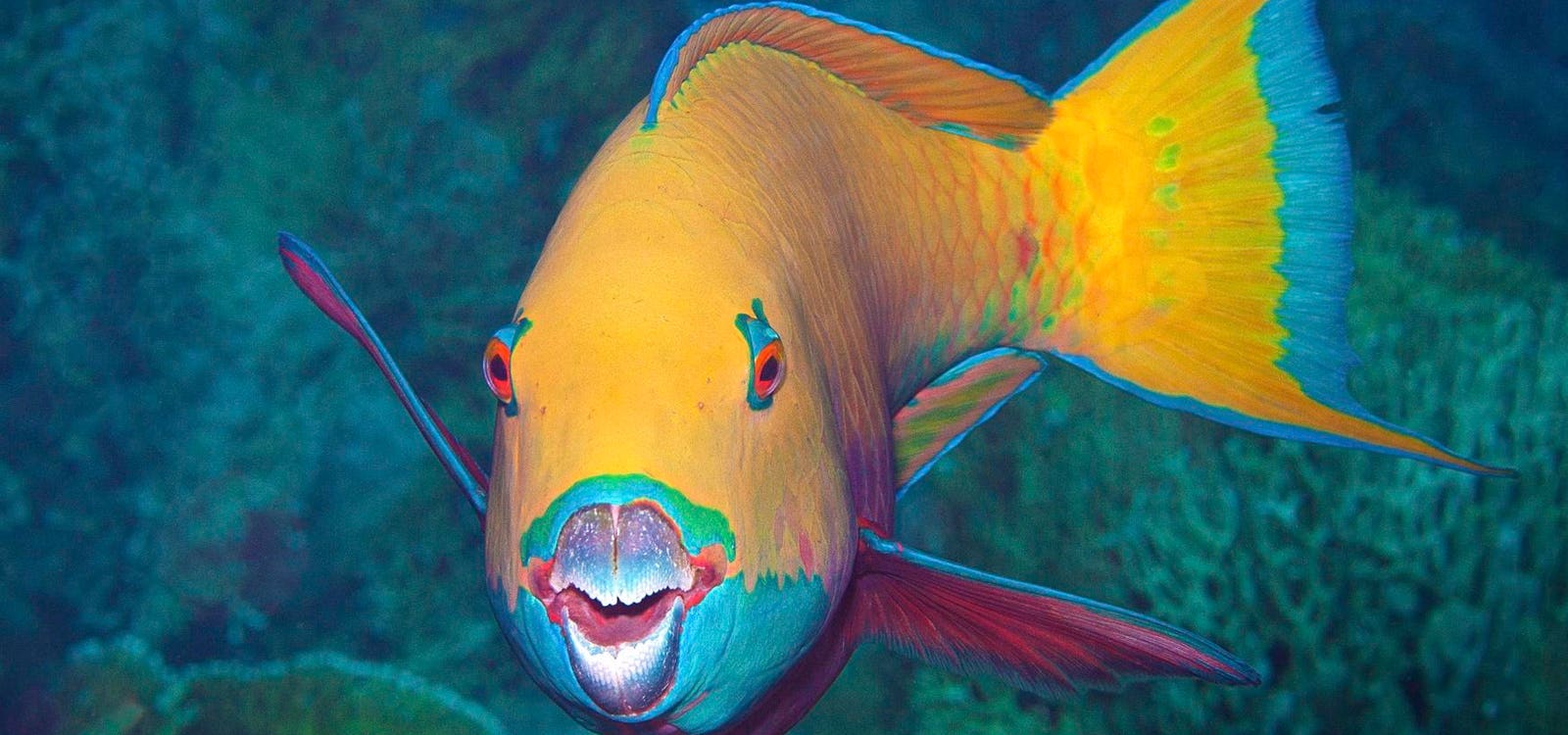Parrotfish have some of the strongest teeth in the animal kingdom and excrete pearly white sand … [+]
Parrotfish are a group of 90-odd species found on coral reefs, seagrass beds and reefs around the world, with the highest diversity in Indo-Pacific waters. Their vibrant and attractive colors – shades of electric blue, green, pink and purple – are known to add to the beauty of coral reefs.
These industrious fish spend most of their lives scavenging coral reef systems by eating the algae and polyps that live on them.
This is a win-win for everyone involved: corals stay clean and healthy, reef fish enjoy a well-maintained habitat, and parrotfish stay well-fed.
These fish also chew on algae-covered rocks, equipped with some of the strongest teeth in the animal kingdom to handle the task. But the real surprise comes from the other side of their digestive system: after breaking down the coral and algae, they excrete it as pearly white sand, helping to create the beautiful beaches we know and love.
A single parrotfish can have up to 1,000 teeth—some of the strongest in the animal kingdom
If you think sharks have the deadliest bites in the marine world, think again. A parrotfish’s teeth are made of some of the strongest biominerals (materials produced by living organisms) ever exist.
They are even stronger than wood, aluminum and glass. These fish have up to 1,000 teeth, which are fused together like a chain to form a parrot-like “beak” that chews the coral and gives it its name.
of tensile strength (the maximum load a material can support without breaking) of a parrotfish tooth on the surface where the bite falls is so high that it can withstand 530 tons of pressure per square inch. That’s like the weight of 88 elephants packed into a single square inch.
However, the hardest known biomineral is the tooth of a sea snail or a sea snail that also chews algae off hard rocks. Expanding our knowledge of the teeth possessed by pufferfish or parrotfish could help inspire advances in the production of long-lasting materials such as those used in construction, electronics or dental fillings.
Countless parrotfish teeth are present from their mouth to their digestive system. They are incapable of breaking down food so finely in a process called bioerosionthat fish excrete real sand.
A single parrotfish dumps thousands of pounds of sand onto our beaches
A single fish can excavate hundreds to thousands of pounds of sand each year, and these make up a significant portion of the pearly white sand found on Pacific beaches. A single heavy-billed parrot can excavate more than 2,000 pounds of sand each year.
A heavy-beaked parrotfish with some of its 1,000 teeth exposed. Note the visual similarity … [+]
Some scientists estimate that up to 70% of the sand found on beaches in the Caribbean and Hawaii is produced by parrotfish.
Parrotfish species come in a range of sizes, from five inches to five feet in length. Some species like the queen parrotfish secrete enough mucus from their mouths to form a protective cocoon around themselves at night before they sleep.
This viscous cocoon helps hide the fish’s scent from predators such as moray eels. It also acts as a unique warning system, letting the fish know to flee when the bladder is disturbed.
Some studies have theorized that eating parrotfish can lead to coral decline, but much evidence suggests otherwise. The ecosystem services provided by parrotfish cannot be ignored – in areas such as the South Pacific, where parrotfish are overfished, corals are suffocated by seaweed.
This is seen in many reefs around the world, and parrotfish populations are often in decline in these parts as well. Humpbacks are particularly vulnerable because of their bad habit of sleeping in aggregations in shallow water, where they become an easy catch for fishing. They are eaten in many countries and sold under the false label of the group, for which there is a higher demand.
Such pressures have led to the local extinction of humpback whales on Guam and severe depletion in other areas such as the Solomon Islands.
Biodiversity loss is at an all time high with unpredictable effects of climate change unfolding daily. Our interconnected oceans feel the effects in intense ways, with warming, acidification, hurricanes and sea-level rise increasing in frequency. How worried are you about climate change and how it is affecting you? Take this test to find out: Level of concern about climate change
